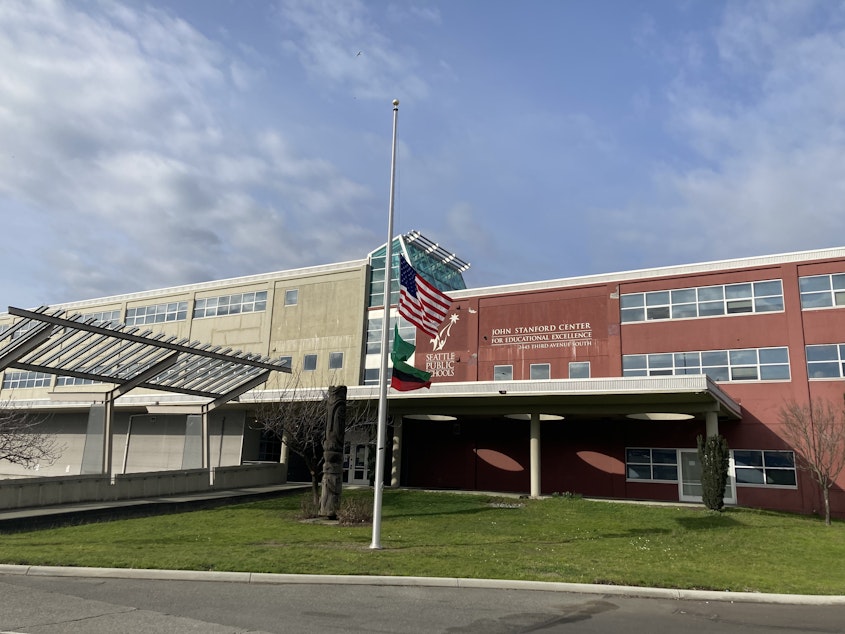Elementary school closures could be on the way for SPS families

Like many school districts across the state and country, Seattle Public Schools is facing a shaky financial future. The district is projecting a $105 million dollar budget shortfall next school year.
On April 8, Seattle Public Schools officials announced a potential solution — closing 20 SPS elementary schools for the 2025-26 school year.
RELATED: 20 Seattle elementary schools could be closed due to budget crisis
Soundside host Libby Denkmann spoke with SPS School Board President Liza Rankin about what these potential closures could mean for educators, families, and students.
"The vote was really intended to provide clarity and our direction to the superintendent," Rankin told Denkmann. "It didn't mean that anything is suddenly going to happen or that decisions have been made about any particular buildings."
Rankin said the SPS School Board in December requested an overview of what it would take for the school system to become financially stable. Their findings included the recommendation to consolidate schools.
Sponsored
"There's a direct connection between the number of students and the number of staff, and, therefore, services that we're able to provide," Rankin said.
Those services include arts and music classes, physical education, and an adequate number of grade-level teachers, Rankin explained.
"And when you have these schools with declined enrollments, the funding doesn't come to sufficiently provide enough staffing to guarantee access to that," she explained, "and that creates a lot of inequity."
Schools in wealthier areas may make up the difference through Parent Teacher Association fundraising. But other kids are left with less access to programs like the arts, Rankin said.
"The consolidation is less about how do we save money, and more about how do we equitably and amply serve the students that we have within the resources that we have," she said.
Right now, SPS has 29 school buildings with under 300 students. And that, said Rankin, isn't financially feasible for the district.
Sponsored
Rankin couldn't clearly say teachers would be laid off as part of this consolidation. But she noted that if the schools didn't reorganize and consolidate their resources, they would be forced to reduce salaries or reopen contracts.
As of now, Rankin said a downward trend in enrollment does seem to be continuing within the district and is projected to continue for the next ten years.
Rankin noted that the district will consider a number of factors when determining which schools to close, including current enrollment, walkability, and building condition.





